Increase Crop Yields, Improve Soil Health, Use Garden Space Efficiently and Keep Pests at Bay
What are the best companion plants for tomatoes? What are the worst companion plants for tomatoes? Here are the answers to these questions.
Companion planting is an organic method of preventing or protecting plants from pests and diseases, attracting the right types of insects for pollination, enhancing nutrient uptake, and increasing crop production simply by growing specific plants near each other. In essence, companion planting helps bring a balanced ecosystem to your landscape, allowing nature to do its job.
1. Organic Pest control
Some plants can emit scents that either repel insects, attract them, or confuse insects or disease organisms in search of their favorite host plants. They make insects less likely to land on your garden vegetables.
2. Attracts beneficial insects
Some plants help attract beneficial insects, such as ladybugs, bees, and butterflies, that pollinate and help control harmful bugs. Beneficial insects feed on common garden pests, like aphids and caterpillars.
3. Provides necessary shade
Tall sun-loving plants offer shade to smaller shade-loving plants. This results in better products and can also potentially provide pest control. A good example is The Three Sisters Garden. Practiced by Native Americans thousands of years ago, this garden includes corn, beans, and squash. The tall corn provides shade for the lower squash but also stops the squash vine borer beetle.
4. Shelters plants
Some plants can provide windbreaks and prevent soil erosion. Strong winds can damage gardens by removing mulch, topsoil, and eroding beds and hillsides. Rain can also cause severe damage by beating down young seedlings. By carefully selecting the right ground cover, you can help prevent soil erosion.
5. Provides natural supports
Some companion plants can physically support each other, reducing the need for staking. The example of planting corn, beans, and squash together applies here again. Corn provides tall stalks for the beans to climb so that they are not out-competed by sprawling squash vines.
6. Saves space
Interplanting different crops greatly maximizes space and improves productivity in small gardens.
7. Enhances flavors
Some plants can subtly enhance the flavor of other plants. Most herbs have been found to enhance the flavor of fruits and vegetables grown nearby, and Basil grown beside tomatoes is an excellent example. Similarly, chamomile has an aromatic scent that is believed to improve the growth and flavor of cabbages, cucumbers, and onions when grown beside them.
8. Better soil quality and fertility
Some crops help fix nitrogen from the atmosphere and reduce fertilizer needs. Similarly, planting plants with different root structures together can aerate the soil and allow plants to pull nutrients from different parts of the soil.
Not only can companion planting helps your plants to grow better, but it also makes the vegetable garden more attractive thanks to the addition of colorful flowers that help or hinder nearby vegetables. Companion planting combines beauty and purpose to create an enjoyable, healthy environment.
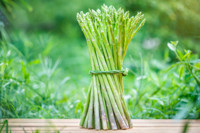 |
Asparagus Tomatoes protect asparagus against asparagus beetles because they contain a substance called solanine. In turn, asparagus repels harmful nematodes that can attack the roots of tomato plants. Tomatoes grown near asparagus are thus protected. Tomatoes also keep down the weeds from the asparagus. |
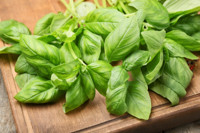 |
Basil Basil improves the growth and flavor of tomatoes. Basil helps tomatoes to overcome insects and diseases. Basil repels flies, mosquitoes, aphids, whiteflies, and tomato hornworms, reducing the need for chemical pesticides. Basil attracts bees, butterflies, beneficial insects, and pollinators, improving pollination. |
 |
Bee Balm Plant bee balm with tomatoes to improve growth and flavor. Bee Balm is great for attracting beneficial insects and bees, of course. |
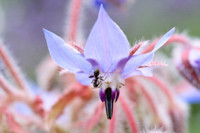 |
Borage Borage also attracts hornworms away from tomato plants. Borage is a good companion plant for tomatoes because it attracts pollinators, such as bees and other beneficial insects, to the garden. Plant near tomatoes to improve growth and disease resistance. Borage may also enhance the flavor of your tomatoes. Borage flowers are pretty, and as an added bonus, they are edible. |
 |
Calendula Among the easiest and most versatile flowers to grow in the garden, Calendula deters tomato worm and many garden pests. The flowers are edible. have a slightly bitter, tangy, and peppery flavor. Sprinkle their petals on soups, pasta, rice dishes, and salads. |
 |
Carrot Tomatoes grow better with carrots. One drawback with tomatoes and Carrots: tomato plants can stunt the growth of your Carrots, but the carrots will still be of good flavor. |
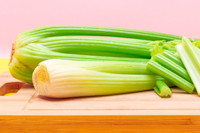 |
Celery Celery flowers attract beneficial insects, such as harmless parasitic wasps, which take down the tomato hornworms. In return, they provide nectar and pollen to the wasps. |
 |
Crimson Clover Crimson clover produces attractive red flowers that entice pollinators like bumble bees and other beneficial insects. Crimson clover will also fix nitrogen and build the soil. Low-growing cover crops like crimson clover can be planted around tomato plants to prevent weeds from germinating. Crimson clover is said to protect tomatoes from substantial devastation caused by flea beetles. |
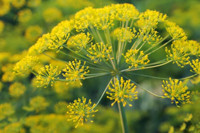 |
Dill Tomato hornworms are attracted to dill. Dill serves as a trap crop as it lures the pest away from your tomato plants. Dill is only a companion plant to tomatoes until it matures. When young, it improves the growth and health of tomatoes, but after it matures, it will slow the growth of your tomato plants. |
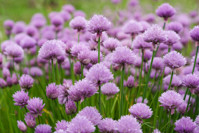 |
Chives
Chives Improve the growth and flavor of tomatoes. In addition, the scent of chives can help repel aphids and other pests from your tomato plants. Garlic sprays are useful in controlling late blight on tomatoes. |
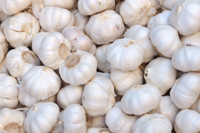 |
Garlic Garlic is an effective killer of diseases that damage tomatoes. Plant garlic with tomatoes against the red spider. Garlic sprays help control late blight. |
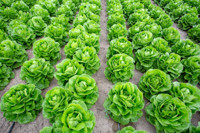 |
Lettuce Garden lettuce grows happily in the shade under taller tomato plants while keeping the soil cool and moist. |
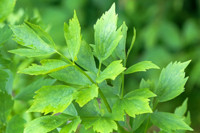 |
Lovage Tomato hornworms are attracted to lovage. Lovage serves as a trap crop as it lures the pest away from your tomato plants. Lovage improves the flavor and vigor of most plants and offers a good habitat for ground beetles. |
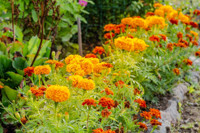 |
Marigolds French Marigolds produce alpha-terthienyl, a substance that suppresses nematodes (microscopic worms that attack the roots of plants), making them suitable for growing in vegetable gardens. These marigolds also help to deter whiteflies when planted around tomatoes. Whiteflies hate the smell of marigolds. |
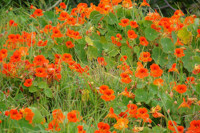 |
Nasturtium Nasturtium is a good companion plant for tomatoes because it acts as a trap crop. Nasturtium traps pests such as aphids away from your tomatoes. In addition, Nasturtiums add cheerful color to the garden, and their flowers are edible. |
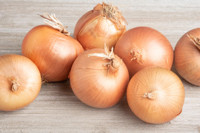 |
Onions Onions are one of the best companion plants in the garden. Their smell protects against pests, and their compact size allows them to be interplanted wherever there is room. |
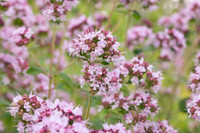 |
Oregano Oregano is a companion to most plants and provides general protection. Oregano attracts hoverflies and Syrphidae and repels aphids. When oregano is in bloom, it might draw beneficial insects. |
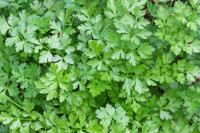 |
Parsley Planted with tomatoes or with asparagus, Parsley will give them extra vigor. |
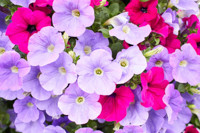 |
Petunias Petunias are a great companion plant for the vegetable garden. Petunias repel many annoying pests, including asparagus beetles, leafhoppers, aphids, and tomato worms. Petunias also offer cheerful colors to your herb or vegetable garden. |
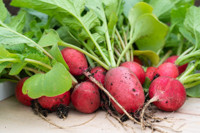 |
Radishes Radishes will deter spider mites when planted close to tomatoes. Plant radishes as sacrificial plants used to stop flea beetles from attacking your tomatoes. |
 |
Roses Tomato is an excellent companion plant for roses. Pretty enough to put in the flower beds, tomatoes protect roses against a disease called black spot. Strain and spray on roses if you cannot plant tomatoes with your roses. To make a spray for roses: Make a solution of tomato leaves (use a fruit or vegetable juicer), 4-5 pints of water, and one tablespoon of cornstarch. |
 |
Sweet Alyssum
Sweet Alyssum attracts parasitic wasps (braconid wasps), which are natural predators of flea beetles. Parasitic wasps also can control tomato hornworms. |
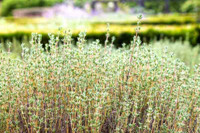 |
Thyme Thyme is not only great for attracting beneficial wildlife, but it is also a natural repellent against tomato hornworms and whiteflies. Plant thyme near your tomatoes to improve their protection. When planted near tomatoes, thyme will also improve the flavor of the fruit. Thyme can also create an aromatic ground cover around your tomato plants. |
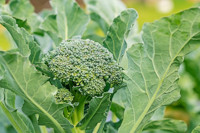 |
Broccoli Tomatoes and all members of the Brassica family repel each other and should be kept apart. |
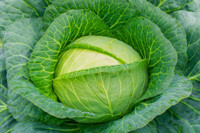 |
Cabbage Tomatoes and all members of the Brassica family repel each other and should be kept apart. |
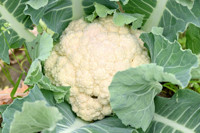 |
Cauliflower Tomatoes and all members of the Brassica family repel each other and should be kept apart. |
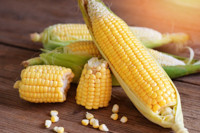 |
Corn Do not plant tomatoes close to Corn, as the tomato fruitworm is very similar to the corn earworm. They would attract more pests if planted together, and the damage would be more extensive. |
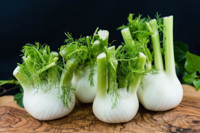 |
Fennel Fennel is one of the few plants that has mostly bad companions. Most plants dislike Fennel, and it should be planted well away from the vegetable garden. Fennel inhibits the growth of any nearby plant, including tomatoes. |
 |
Potatoes Tomatoes render potatoes more susceptible to potato blight. Keep potatoes and tomatoes apart as they both can get early and late blight contaminating each other. |
| Hardiness |
2 - 11 |
|---|---|
| Climate Zones | 1, 1A, 1B, 2, 2A, 2B, 3, 3A, 3B, 4, 5, 6, 7, 8, 9, 10, 11, 12, 13, 14, 15, 16, 17, 18, 19, 20, 21, 22, 23, 24, A1, A2, A3, H1, H2 |
| Plant Type | Fruits |
| Genus | Solanum |
| Exposure | Full Sun |
| Season of Interest |
Spring (Late) Summer (Early, Mid, Late) Fall |
| Maintenance | Average, High |
| Water Needs | Average |
| Soil Type | Clay, Loam, Sand |
| Soil pH | Acid, Neutral |
| Soil Drainage | Moist but Well-Drained |
123rf
| Hardiness |
2 - 11 |
|---|---|
| Climate Zones | 1, 1A, 1B, 2, 2A, 2B, 3, 3A, 3B, 4, 5, 6, 7, 8, 9, 10, 11, 12, 13, 14, 15, 16, 17, 18, 19, 20, 21, 22, 23, 24, A1, A2, A3, H1, H2 |
| Plant Type | Fruits |
| Genus | Solanum |
| Exposure | Full Sun |
| Season of Interest |
Spring (Late) Summer (Early, Mid, Late) Fall |
| Maintenance | Average, High |
| Water Needs | Average |
| Soil Type | Clay, Loam, Sand |
| Soil pH | Acid, Neutral |
| Soil Drainage | Moist but Well-Drained |
Create a membership account to save your garden designs and to view them on any device.
Becoming a contributing member of Gardenia is easy and can be done in just a few minutes. If you provide us with your name, email address and the payment of a modest $25 annual membership fee, you will become a full member, enabling you to design and save up to 25 of your garden design ideas.
Join now and start creating your dream garden!
Create a membership account to save your garden designs and to view them on any device.
Becoming a contributing member of Gardenia is easy and can be done in just a few minutes. If you provide us with your name, email address and the payment of a modest $25 annual membership fee, you will become a full member, enabling you to design and save up to 25 of your garden design ideas.
Join now and start creating your dream garden!